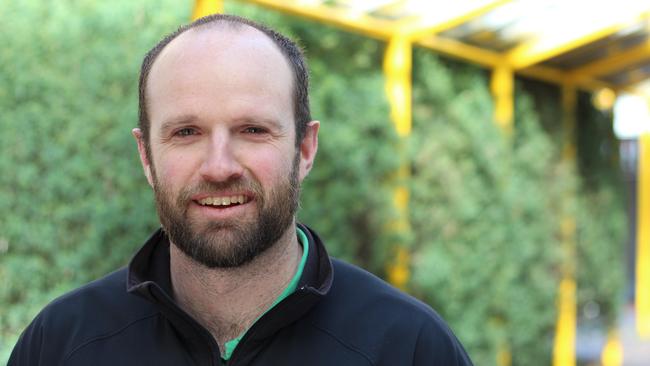Male primary school teachers see physical contact with pupils as a challenge
A pupil is crying but the teacher is hesitant to offer a natural, calming hug ... because he’s male. What can he do?

Among the small band of male primary teachers, many avoid physical contact with their young pupils because they worry it could be misinterpreted.
“A lot of them were quite fearful of false allegations, which can be pretty much career-ending,” teacher turned researcher Vaughan Cruickshank said.
His recent PhD study looked at strategies that might help male teachers stay on in primary schools. Last year, just 18 per cent of primary school teachers in Australia were male, compared with 30 per cent in the mid-1980s. “I want school staffrooms to be reflective of the community, I want all primary school students to see someone like them so they can feel ‘education is for me’,” said Dr Cruickshank, a former health and physical education teacher who trains new teachers at the University of Tasmania.
His survey of 53 male primary teachers in Tasmania identified physical contact as the key challenge. “A lot said, I would be happy to give a crying child a cuddle but I’m very fearful of other people’s perceptions,” he said.
However, some more experienced teachers in the survey said they would not hold back because they “didn’t want kids to think only women can give them hugs”.
“It’s accurate to say most participants leaned towards a minimal physical contact mindset, which is a bit sad,” Dr Cruickshank said.
When a child needed first aid, some male teachers would even defer to female colleagues. Avoiding contact such as hugs, male teachers might use high fives, handshakes and humour to build positive relationships with pupils.
Others protected themselves by moving to a public space for any one-on-one meetings with pupils.
Another challenge turned up by the survey was social isolation. “If I was in a school with literally the principal, the groundsman and me the only men, that was a different social experience — and that’s probably not an uncommon statistic,” Dr Cruickshank said.
“I always got on very well with all my female colleagues but there was that sense of social isolation.”
Some male teachers made a special effort to find common social interests with female colleagues, others sought a balance in male-friendly hobbies outside school. Teachers who were the only males were likeliest to be called on to do extra “men’s work”, such as disciplining badly behaved pupils, lugging furniture or fixing computers. This required them to manage their time effectively.
Although scholarships and quotas were important measures to attract men into primary teaching, their numbers continued to decline, meaning more thought had to be given to retaining those already in the system.
Dr Cruickshank likened it to fixing the hole in a bucket rather than just pouring in more water.
“I’d be very interested to take this survey nationally and do some workshops with male teachers and give them the strategies that came out of my findings.”


